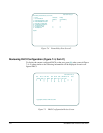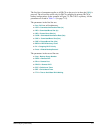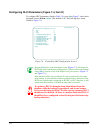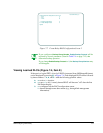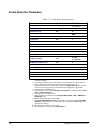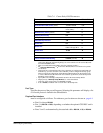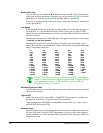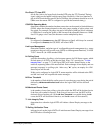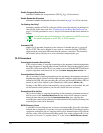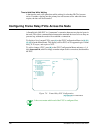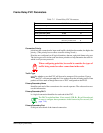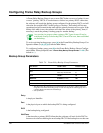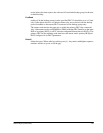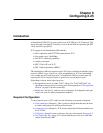
7-18 SmartSwitch 1800 4.0 User Guide, Rev 01
Enable Outgoing Rate Control
determines whether the rate parameters (CIR, B
C
, B
E
) will be enforced.
Enable Bandwidth Allocation
determines whether bandwidth allocation (described on page 7-6) will be enforced.
For Backup Use Only?
determines whether all DLCIs on the port will be reserved exclusively as backups for
other DLCIs in the same node. See "Configuring Frame Relay Backup Groups" on
page 7-22. If this parameter is set to
Y
, the port will remain disabled until needed for
backup.
If configuring the port for backup use only, make sure no DLCIs on the port
have been configured on an IP, IPX, or LLC2 interface.
Automatic DCE
enables (if
Y
) automatic detection by the software of whether the port is a physical
DCE or DTE. This can be helpful in cases such as a connected backup CSU/DSU,
which might be configured differently than the primary connection. The automatic
DCE feature allows switchover to occur without reconfiguring the port.
DLCI Parameters
Committed Information Rate (In/Out)
(CIR) is the incoming or outgoing (depending on the parameter) data throughput that
the network agrees to support under normal conditions. Outgoing throughput greater
than CIR will be reduced to CIR if (a) a packet is received with the BECN (backward
explicit congestion notification) bit set, and (b)
Enable Outgoing Rate Control
is
Y
.
Committed Burst Size (In/Out)
(B
C
) is incoming or outgoing (depending on the parameter) the maximum amount of
data that the network agrees to transfer under normal conditions within the time period
defined by B
C
/CIR. Any data exceeding B
C
will have the Discard Eligibility (DE) bit
turned on, and will be tracked by the SmartSwitch 1800 statistic
DE/sec (*10)
.
Turning on the DE bit will not automatically cause a packet to be discarded, but will
tell the network which packets it can discard if traffic becomes too heavy.
Excess Burst Size (In/Out)
(B
E
) is the incoming or outgoing (depending on the parameter) maximum amount of
data in excess of the
Committed Burst Size
that the network will attempt to transfer
during the time interval used for the
Committed Burst Size
. Any outgoing data
exceeding this value will be buffered in the SmartSwitch 1800, and any incoming data
exceeding the value will be discarded.
BECN Recovery Count
is a method of controlling the rate of return to maximum traffic flow after it has been
reduced due to congestion. If a packet is received with the BECN (backward explicit
congestion notification) bit set, outgoing traffic will be throttled back to CIR, and the
effective value of B
E
will become
0
(limting traffic flow to the configured B
C
). From
that point on, for each "n" packets (where "n" is the value of
BECN Recovery Count
)



